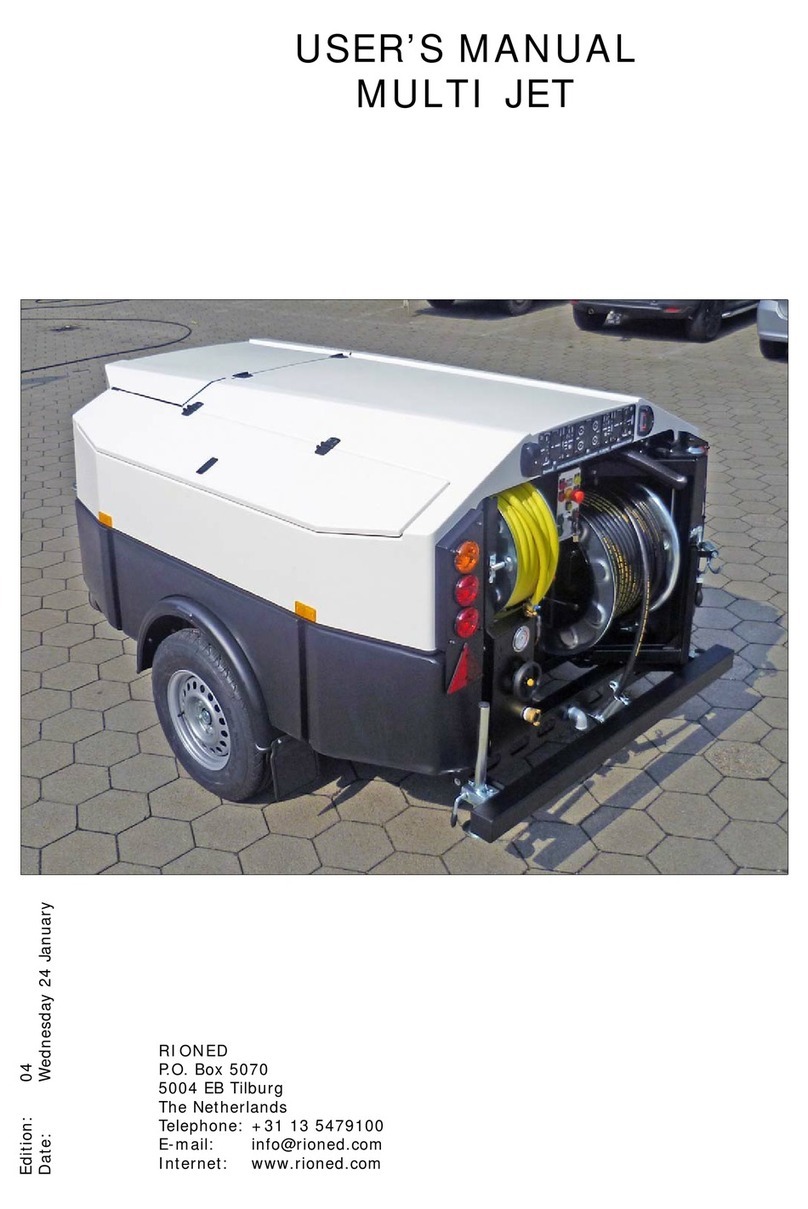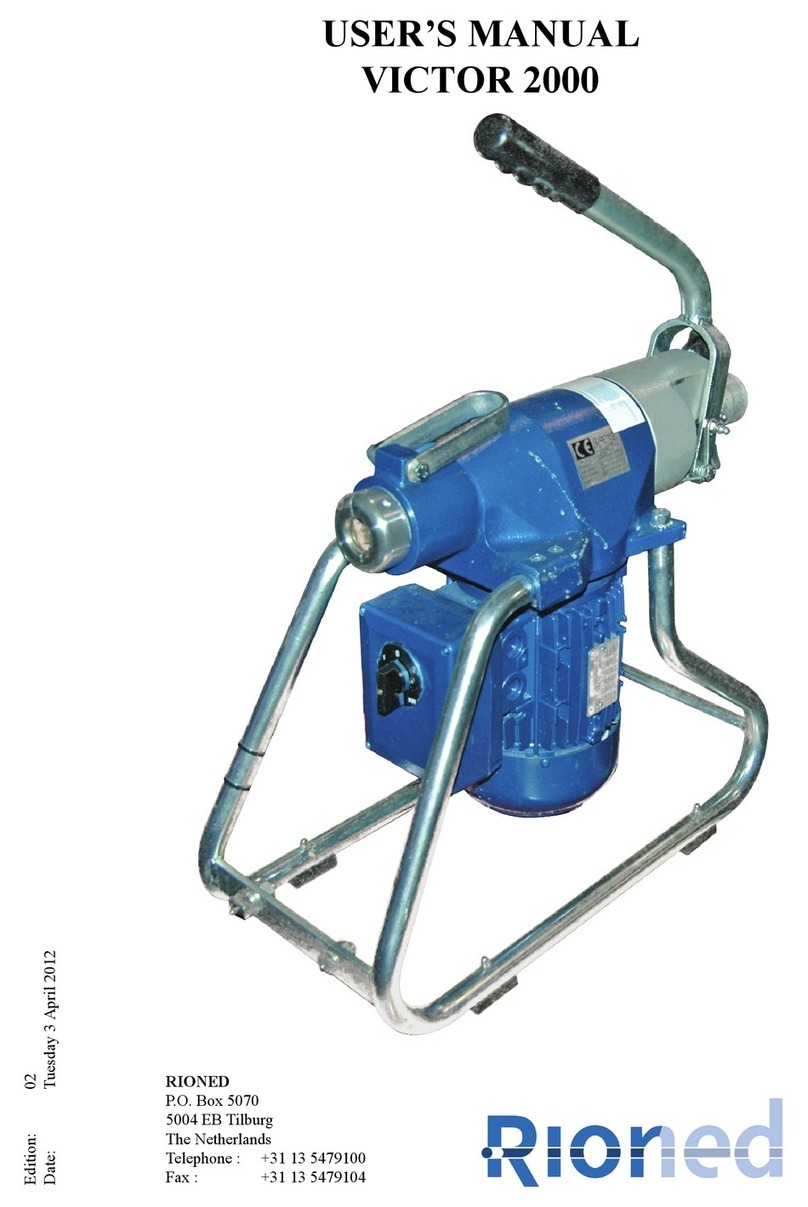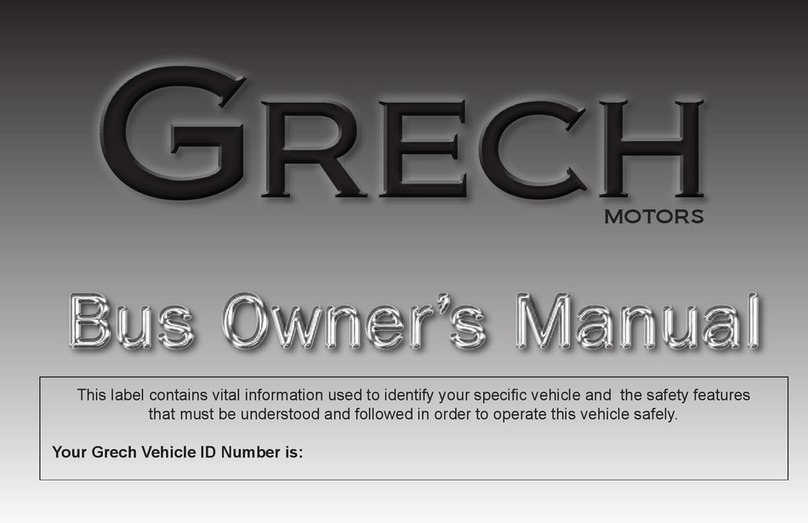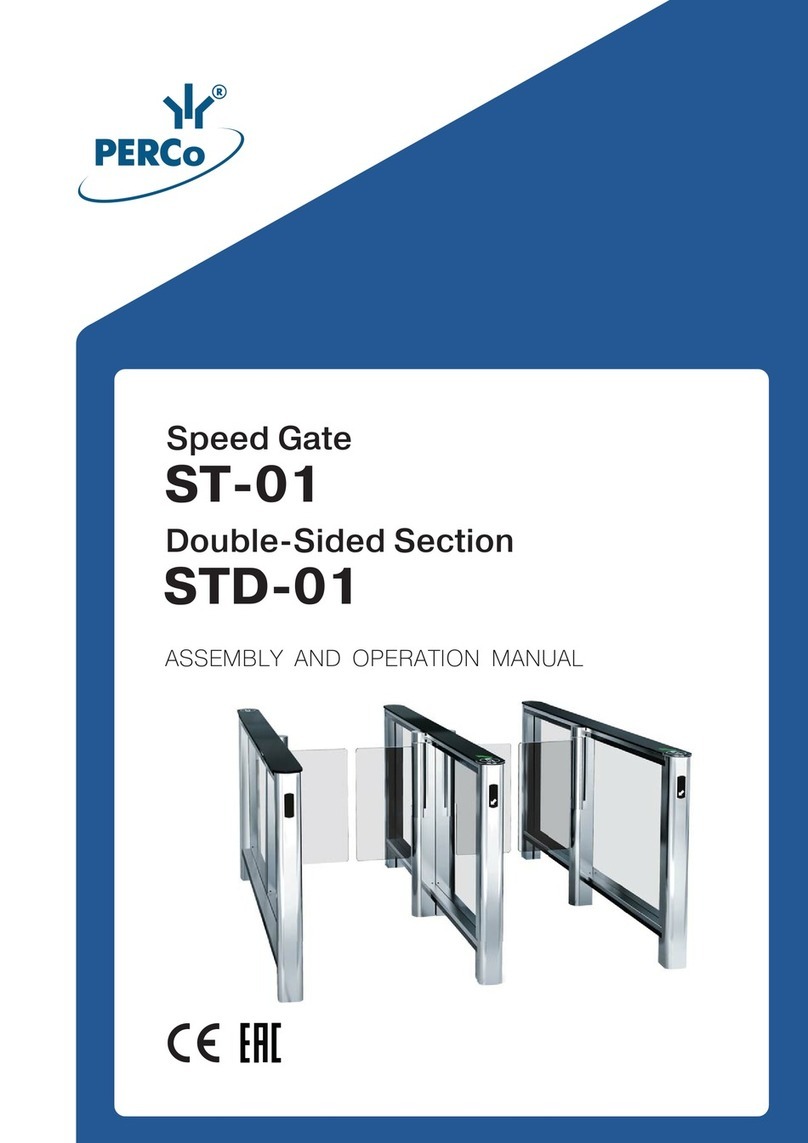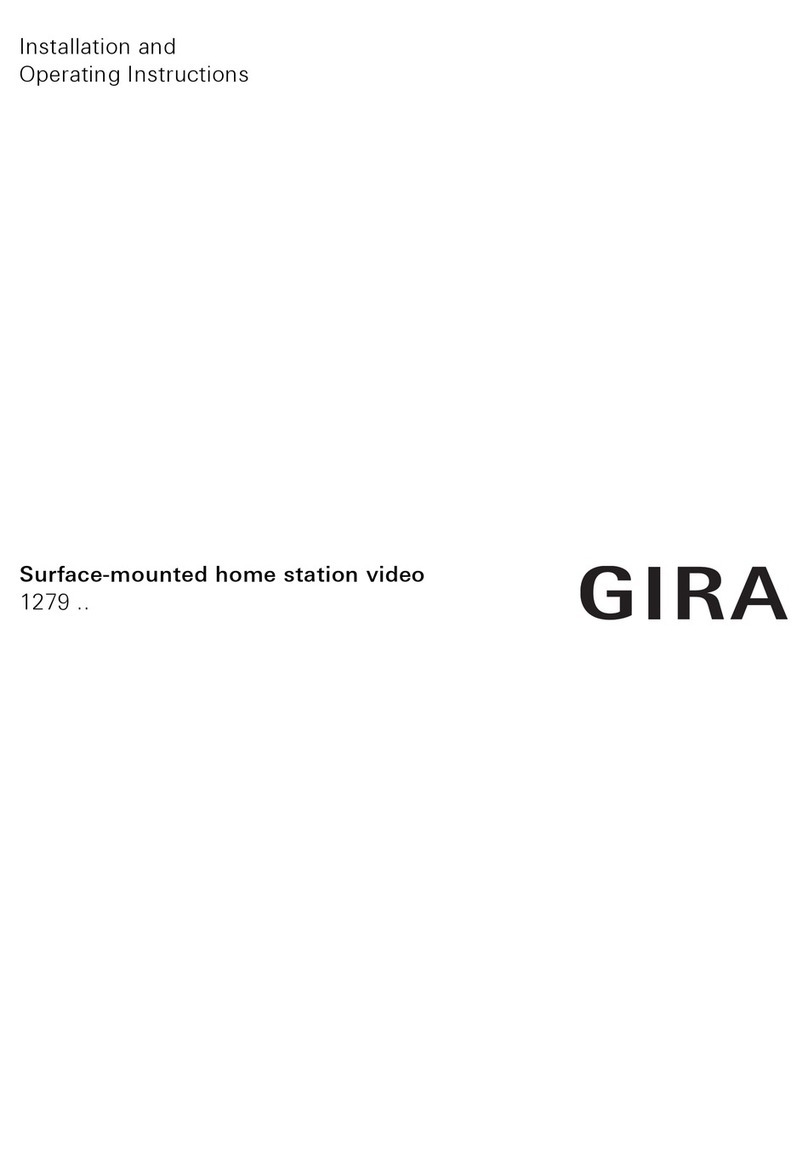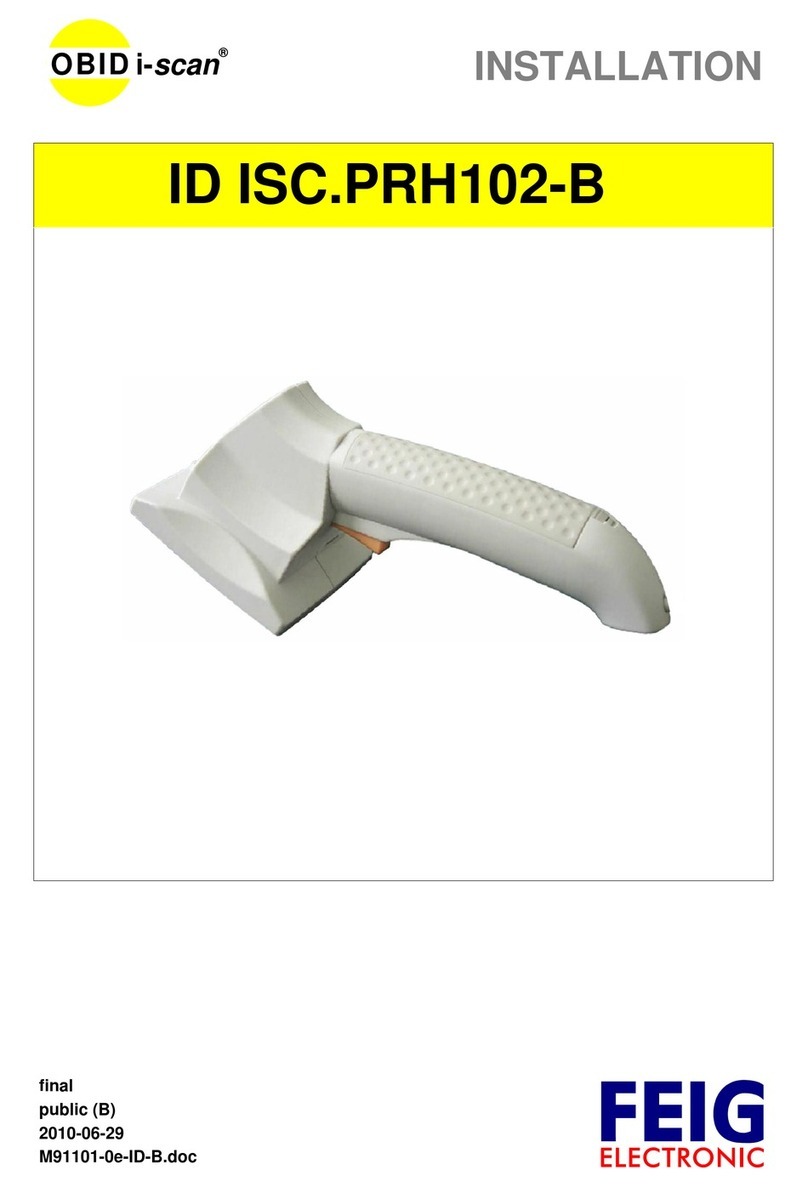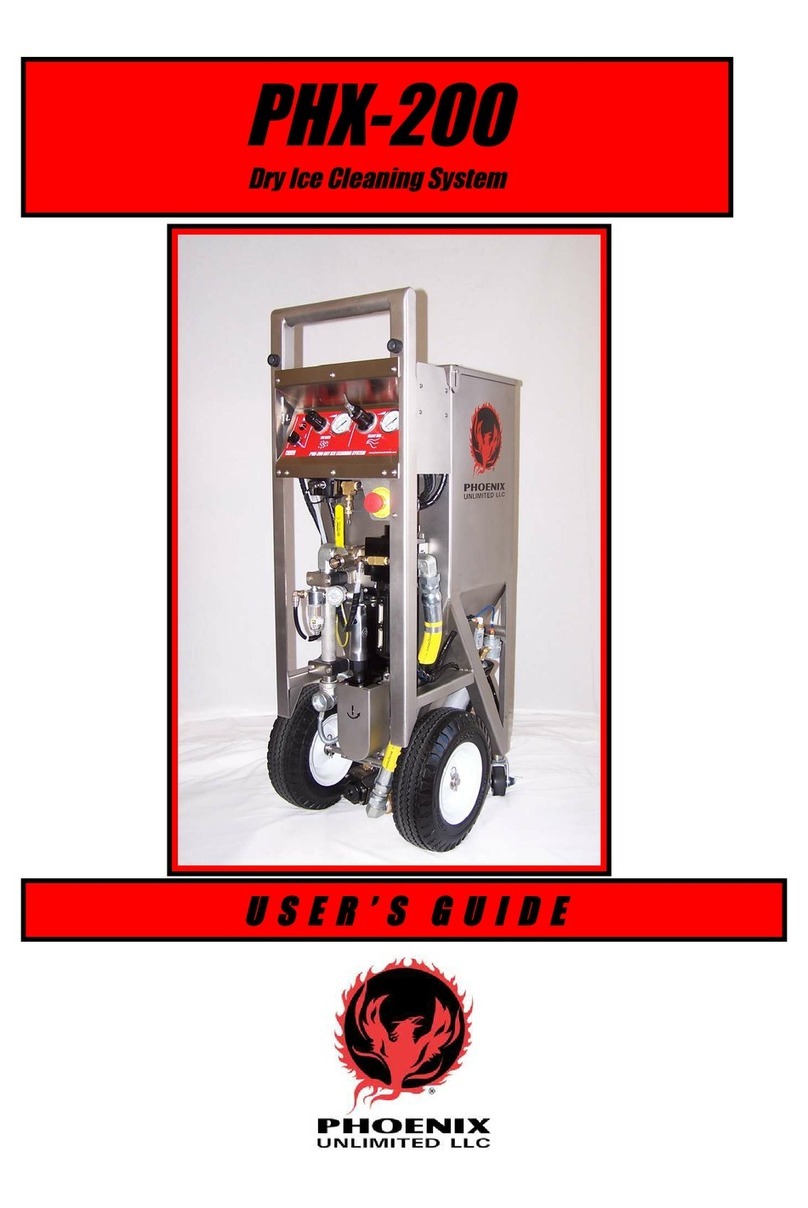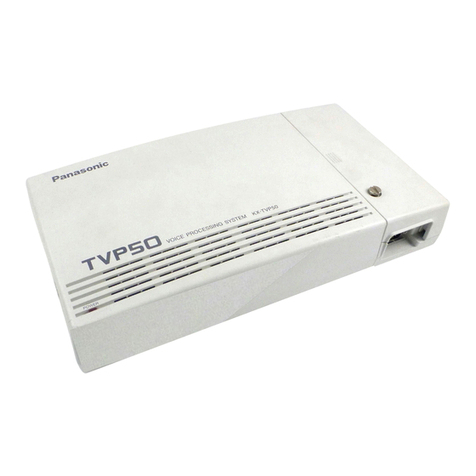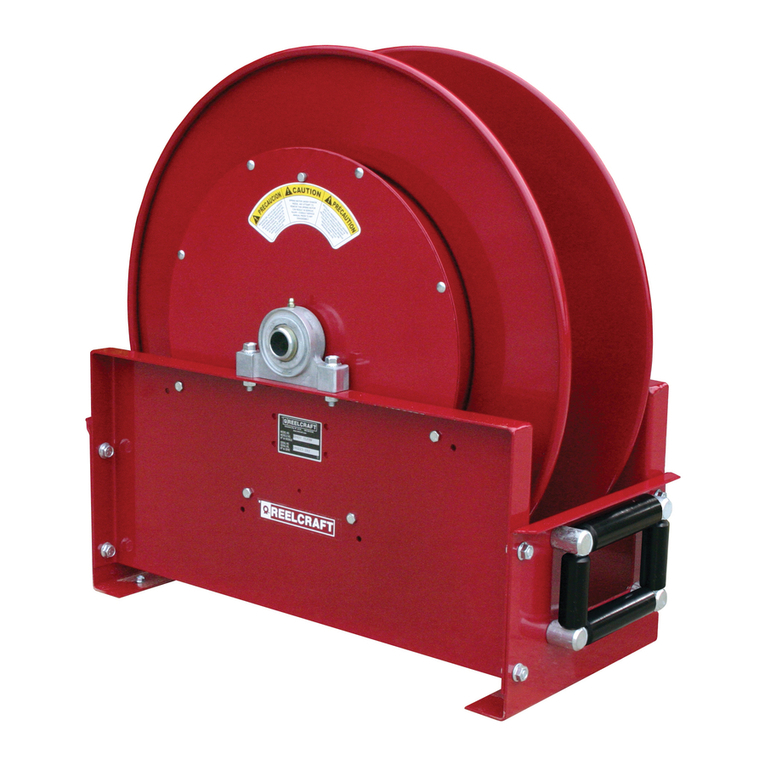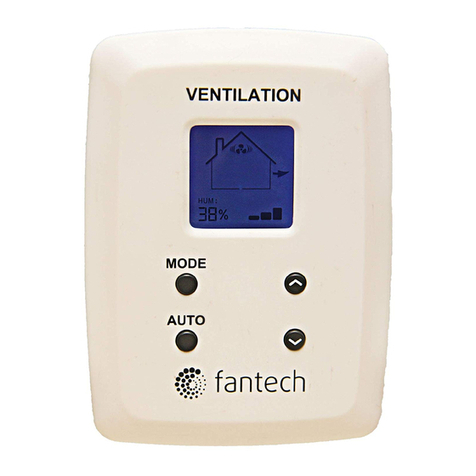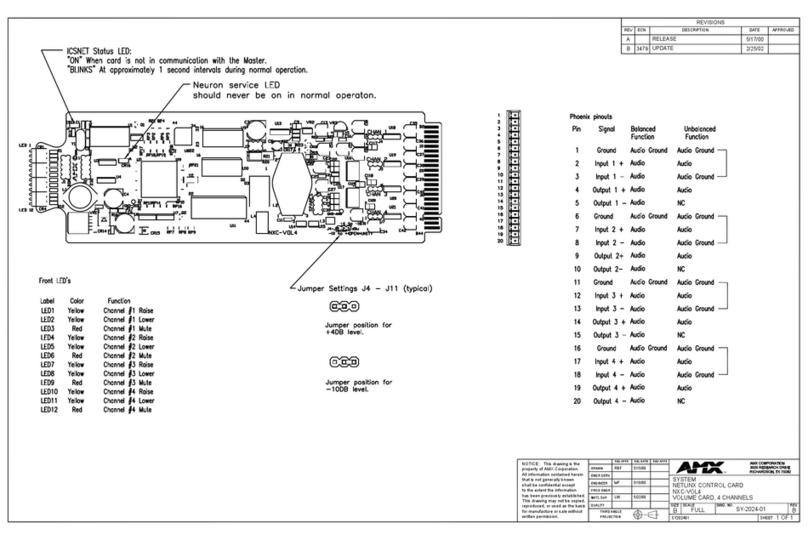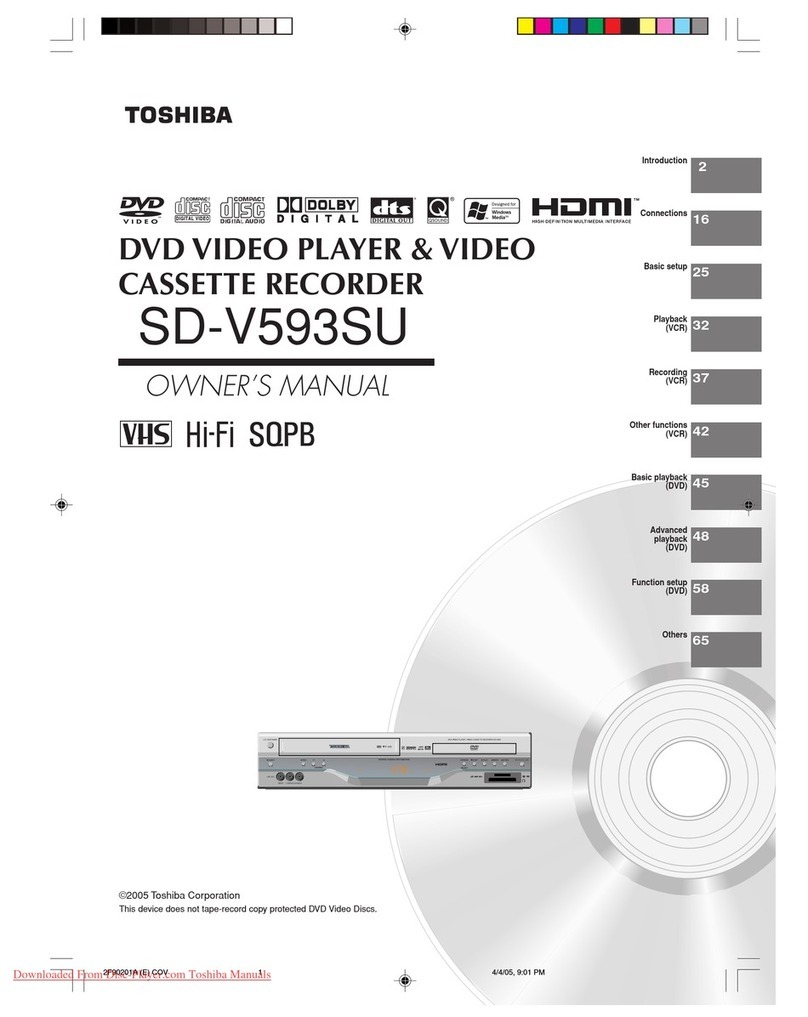Rioned Master User manual

User’s Manual
Master
Edition: 03
Date: Thursday 6 January 2011
RIONED
P.O. Box 5070
5004 EB Tilburg
The Netherlands
Telephone : +31 13 5479100
Telefax : +31 13 5479104

01/11 2
©Copyright 01/11 Rioned/RIOR B.V.Tilburg - Nederland
All rights reserved. No part of this publication may be copied or published by means of printing, photocop-
ying, microfilm or otherwise without the prior written consent of RIONED. This restriction also holds for
the corresponding drawings and diagrams.
RIONED has the right to change parts at any time without any prior or direct warning to the client. Also,
the contents of this manual can be changed without any prior warning.
This manual is to be used only for this machine.
For extra information on adjustments, maintenance and repair, please contact the technical department of
your dealer.

01/11 3
Foreword
This user’s manual is a manual for the professional user.
This user’s manual has the purpose to control the machine in a safety manner and must be saved with the
machine.
The photos and drawings help you understand the text easier.
First the user’s manual gives you an overview of the most important safety aspects. Then we explain how
the machine is built up and the global working of the machine.
Chapter “Technical specifications” gives you information about the working characteristics, performance
under normal use and construction specifications.
“Control” is the next chapter. This chapter explains how to use the machine systematically.
In the chapter “Maintenance”, the user can do small maintenance on the machine.
Chapter “Trouble shooting” has the purpose to solve simple defects.
With the “Exploded views” you can order original spare parts, are also useful for mounting, and disassemble
the machine.
Finally gives the chapter “Appendix” information about electrical and/or hydraulic connections.

01/11 4

01/11 5
Table of Contents
1 INTRODUCTION ............................................................................................................... 7
1.1 Use............................................................................................................................... 7
2 SECURITY........................................................................................................................... 9
2.1 Instruction indications in this manual.......................................................................... 9
2.2 Descriptions security measures ................................................................................... 9
2.3 Personnel protection outfit .......................................................................................... 9
2.4 Warnings...................................................................................................................... 9
2.5 Personnel qualification and education....................................................................... 10
2.6 Danger that can occur if the security regulations aren’t observed ............................ 10
2.7 Working safely........................................................................................................... 10
2.8 Security regulations for the user and technical service ............................................. 10
2.9 Security regulations for maintenance, inspection and mounting activities ............... 10
2.10 Making changes and fabricate spare parts................................................................. 10
2.11 Improper use.............................................................................................................. 10
3 TECHNICAL SPECIFICATIONS .................................................................................. 13
3.1 General ..................................................................................................................... 13
3.2 Motor........................................................................................................................14
4 CONSTRUCTION............................................................................................................. 15
5 CONTROL ......................................................................................................................... 17
5.1 Transport....................................................................................................................17
5.2 Controls .....................................................................................................................17
5.3 Before unblocking ..................................................................................................... 18
5.4 Unblocking ................................................................................................................ 18
6 MAINTENANCE............................................................................................................... 21
6.1 General ......................................................................................................................21
6.2 Cleaning the feed unit................................................................................................ 21
6.3 Extensive periodical maintenance ............................................................................. 21
6.4 Maintenance schedule ............................................................................................... 22
7 ACCESSORIES ................................................................................................................. 23
7.1 Supplies .....................................................................................................................23
7.2 Auxiliaries that can be coupled: ................................................................................24
8 EXPLODED VIEWS......................................................................................................... 27
8.1 Exploded view Master. .............................................................................................. 28
8.2 Bill of material Master............................................................................................... 29
9 APPENDIX......................................................................................................................... 31
9.1 EC declaration Of Conformity For Machinery ......................................................... 31
9.2 Sales Managers.......................................................................................................... 32
9.3 Sound level report...................................................................................................... 33
9.4 Electric schema.......................................................................................................... 34

01/11 7
1INTRODUCTION
RIONED wishes to thank you for your purchase of the RIONED drain and sewer-clearing machine.
We recommend that you read this manual thoroughly and see that the machine is handled and main-
tained in the proper manner. If your machine should give trouble and need servicing, when you want
to order parts, or if you have any questions, contact your RIONED dealer.
The machine is built by:
RIONED
P.O. Box 5070
5004 EB Tilburg
The Netherlands
Telephone : +31 13 5479100
Telefax : +31 13 5479104
Your machine is specifically designed to clean drain- and sewer pipes with a diameter from ∅75
mm to ∅250 mm by using specially manufactured cleaning springs with a diameter of ∅20 mm
diameter.
The machine may only be used by authorized personnel.
The machine can not be used in an explosive environment.
Fill the spring drum only with springs we describe in this manual.
In this manual you will find all necessary information concerning operations and maintaining your
machine. If handled properly, your machine is guaranteed according the general delivery conditions.
1.1 Use The main shaft is being driven by the electrical motor by means of a V-belt. On this axle the spring
drum is mounted. The drum contains the spring which is to be lead into the drain or sewer opening.
By means of the spring transporter and rotation direction the spring can be:
AFed out of the drum.
BFed into the drum.
CKept in place.

01/11 8

01/11 9
2SECURITY
Be responsible for other people when you are working with this machine.
This manual contains instructions for fundamental conditions that must be followed by use and
maintenance of this machine.
That is why it is necessary that authorised and qualified personnel must read the user's manual and
the user’s manual must always be available with the machine. Near the general regulations in this
chapter, you must also follow the security regulations in the other chapters.
2.1 Instruction in-
dications in this
manual
The in this manual containing security instructions, which are dangerous if they are not obeyed, are
marked with general security signs.
Security sign DIN 4844-W9.
2.2 Descriptions se-
curity measures
•Emergency stop
This machine is equipped with an emergency stop. By operating the emergency stop, the
machine will stop immediately. Do not use this button for normal stopping. Only use it
when dangerous situations occur. After use, remove the danger and pull the emergency
stop in order to be able to start up again. Make sure the emergency stop can always be
reached.
•Security covers
This machine is equipped with several security covers over parts that are rotating. It is
forbidden to remove these security covers during operating this machine. You can only
remove them if there is maintenance on the machine. Stop the machine and take the plug
out of the wall socket.
•Spring guidance tube
The spring guidance tube protects you against the rotating spring. Now your clothes can
not get clamped between the spring openings.
2.3 Personnel pro-
tection outfit
•Protection looking glasses
•Gloves (Recommended)
•Dust cover (Recommended)
2.4 Warnings Never take the spring when turning.
Do not let the spring turn outside ( swing of the spring).
Do not start the machine with switched in feed unit.
Take care of a stable disposition of the machine.
Never block the control lever, unless this is mentioned.
Do not wear cloth that hangs loose.
Please note safety instructions (See Chapter 9.5 "Safety instructions" page: 35).
Dust that arises when working on material containing asbestos or stonework containing crystalline
silicic acid is harmful to the health. Please follow accident prevention regulations.

01/11 10
Do not pierce the motor housing as this could damage the double insulation (use adhesives).
Keep mains lead clear from working range of the machine. Always lead the cable away behind you.
Never touch the spring if it is rotating. Not even with auxiliaries or other tools.
Never let the spring rotate outside a sewer, drain or pipe.
Never start the machine with the spring pusher downwards.
Never touch the spring if it is rotating. Not even with auxiliaries or other tools.
Never let the spring rotate outside a sewer, drain or pipe.
Make sure the machine is stable during operation.
Do not let the machine operate without supervision.
2.5 Personnel qual-
ification and educa-
tion
Personnel that use, maintain and inspect the machine must have the right qualifications for this job.
Responsibility and authorisation of the personnel and the supervision on the personnel must be em-
bedded. If the knowledge is not present, the user must provide for the necessarily education.
2.6 Danger that can
occur if the security
regulations aren’t
observed
If the security regulations are not observed, danger can occur for personnel and for the environment.
No amends are given if the regulations are not observed.
If the regulations are not observed, this can results in:
•Failure of important functions of the machine.
•Failure of prescribes methods for maintenance.
•Exposure of persons to dangers of electrical or mechanical failures
2.7 Working safely The in this manual named security prescriptions, the national prescriptions to prevent accidents and
the internal labour, company and security prescriptions must be followed by the user.
2.8 Security regula-
tions for the user
and technical serv-
ice
•Protections of moving parts (for example couplings) may not be removed if the machine
is working.
•Leakage of dangerous mediums must disposed in a manner that there is no danger for the
personnel and environment. Statutory regulations must be followed.
•Danger caused by electricity must be excluded.
2.9 Security regula-
tions for mainte-
nance, inspection
and mounting activ-
ities
•The user sees to it that qualified technicians do all maintenance, inspection and mounting
activities. They must study the manual thoroughly.
•Maintenance may only be done when the machine is not functioning and the plug is out
of the wall socket.
•The in the user’s manual mentioned handling to stop the machine must be notified.
•Directly after maintenance of the machine, all the security and protection facilities must
be functionally.
•Before starting the machine again, you must follow the instructions correctly.
2.10 Making
changes and fabri-
cate spare parts
Changes to the machine are only permitted if Rioned has given written authorisation. The use of
original spare parts and accessories are for the safety necessary. Rioned is not responsible for inju-
ries or damages if other spare parts are used.
2.11 Improper use The security during working with the machine is only guaranteed if the use of the machine is con-
form the user’s manual. The limits that are written in chapter “Technical Specifications” and “Ap-

01/11 11
pendix” may never be overstept.
If the machine does not work or give troubles, it is forbidden to work further with the machine. Tel-
ephone your dealer or the technical department of Rioned
Telephone: +31 (0) 13-5479100
This manual contains all the necessary information concerning control and maintenance. If the de-
vice is positioned correctly, properly controlled, and regularly maintained, a warranty will be given
according to the general conditions of delivery. However, should it arise that the control and main-
tenance procedures are not diligently followed, the warranty will become invalid.

01/11 12

01/11 13
3TECHNICAL SPECIFICATIONS
3.1 General
Description (symbol) Unit
Type : Master
Total length (l) : 0,65 m
Total height (h) : 0,80 m
Total width (b) : 0,57 m
Weight (dry) (m) : 42 kg
Spring lengths (l) : 5 m, 10 m, 15 m, 20 m and 25 m
Maximum spring length : 60 m
Spring diameter : ∅20 mm
Springs suitable for sewer diameter : ∅75 - ∅250
Place type plate : Behind, on the protection cover
Place frame number : Behind, left on crossbeam
Sound level : See Chapter 9.3 Sound level report Page: 33
Measure position : See Chapter 9.3 Sound level report Page: 33
In and out speed spring : 0 - 6 m/min
Rotation direction : left and right
Year of construction (month/year) : 01/11

01/11 14
3.2 Motor
Description (symbol) Unit
Type : AEG
Power (P) : 450 W
Voltage and frequency : 230 V, 50 Hz.
Number of revolutions : 1300 min-1
Current : 3,7 A
Condensator : 16μF / 400 V
Security : Thermal
Isolation class : IP 54

01/11 15
4CONSTRUCTION
The spring cleaning device contains the following main parts:
Illustration 4.1 A Electric motor
BLobe knob
CPressure knob
DStarting button (Green)
EStop button (Red)
FRotation direction left (Black)
GFeed unit
HGuide tube
ISpring guidance tube
JMetal case
KSupport wheel
LFrame
MTyres
NTransport grib
OLobe knob for Transport grib
PEmergency stop
Q
Illustration 4.1
Spring cleaning device Master
A
I
M
J
B
G
C
H
Q
L
O
N
K
ED F
P
Drum

01/11 16

01/11 17
5CONTROL
If you control, maintain or inspect the machine, you must have the right
qualifications for this job. If you do not have the necessarily knowledge, you may
not use the machine. Further, you must convince yourself that you understand this
manual thoroughly.
5.1 Transport 1. Pull the plug out of the wall socket.
2. Wind the wire over the handle. (See Illustration 4.1 N page: 15).
3. Couple the spring loose and put in storage.
4. Let the standard spring reach a little bit out of the feed unit.
5. Turn the lobe knobs loose (See Illustration 4.1 O page: 15).
6. Pull the handle (See Illustration 4.1 N page: 15) completely out of the frame (See Illus-
tration 4.1 L page: 15).
7. Fasten the lobe knob.
8. Overturn the spring machine by means of the handle.
9. Now you can move the spring machine.
The support wheel can be used when you want to lay down the Master and drive somewhere under!
5.2 Controls 1. Lobe knob (See Illustration 4.1 B page: 15):
By loosening the two lobe knobs, you can dismantle the feed unit.
2. Pressure knob (See Illustration 4.1 C page: 15):
By turning the pressure knob, you can bring the feed unit in and out of order.
aTurn pressure knob clockwise:
Feed unit activated. Spring rotates and gets transported.
bTurn pressure knob counter clockwise:
Feed unit out of order. Spring rotates, no transportation.
3. Press button “Green” (See Illustration 4.1 D page: 15):
With this button, the motor starts. The drum begins to rotate.
4. Press button “Red” (See Illustration 4.1 E page: 15):
With this button the motor stops.
5. Press button “Black” (See Illustration 4.1 F page: 15) (only in combination with press
button “Green”):
This press button can only be used in combination with the “Green” press button. By
pushing the “Black” and the “Green” button at the same time, the drum rotates the other
direction.
6. Emergency stop (See Illustration 4.1 P page: 15) (“Red” button with yellow back plate):
This machine is equipped with an emergency stop. By operating the emergency stop, the
machine will stop immediately. Do not use this button for normal stopping. Only use it
when dangerous situations occur. After use, remove the danger and pull the emergency
stop in order to be able to start up again. Make sure the emergency stop can always be
reached.
7. Feed unit handle (See Illustration 4.1 G page: 15):
By operating this handle, the transportation of the spring is controlled (Only the green
button).
aLever maximum upwards:
Spring transport speed maximum in.
bLever maximum downwards:
Spring transport speed maximum out.
cLever horizontal:
No spring transport.

01/11 18
5.3 Before unblock-
ing
1. Couple a spring with a diameter of 16 mm onto the standard spring.
2. Loosen the pressure knob (See Illustration 4.1 C page: 15).
3. Press the green press button.
4. Keep the handle upwards.
5. Fasten carefully the pressure knob.
Now the spring gets fed into the spring drum.
6. Press the red stop button if the beginning of the spring is in sight.
7. Let the handle loose.
The spring is now wind up in the spring drum.
8. Couple the spring guidance tube onto the feed unit.
9. Press the green press button.
10. Keep the handle downwards.
11. Fasten carefully the pressure knob.
Now the spring is fed out of the spring drum.
12. Press the red stop button if the beginning of the spring is come out of the spring guidance
tube.
13. Release the handle.
14. Loosen the pressure knob.
15. Couple the desired cleaning head (See Chapter 7.2 Auxiliaries that can be coupled: page:
24) onto the spring coupling.
5.4 Unblocking 1. Put the spring machine as near as possible to the drain opening.
Never use the spring without the spring guidance tube ( Illustration 5.4.1).
When the spring guidance tube is not long enough, you can use the telescope-inlet-
tube or another guide tube ( Illustration 5.4.3).
Never let the machine run without supervision
Illustration 5.4.1
Wrong manner of
working:
Guiding the spring
without spring guidance
tube.
!

Illustration 5.4.2
Right manner of working:
Hand on handle and
spring guidance tube.
01/11 19
2. Feed the spring in the drain that has to be cleaned ( Illustration 5.4.2).
3. Check if the pressure knob is loose.
4. Press the green start button (See Illustration 4.1 D page: 15).
5. Push the handle downwards.
6. Fasten the pressure knob.
Now the spring can be fed in.
Depending of the position of the handle, the spring moves quicker or slower in or out of
the spring drum.
Fasten the pressure knob more when slip occurs during transport.
If the slip stays, change the rotation direction!
Stop the machine if the slip does not disappear!
The spring is locked in the pipe and must be pulled out or the press rollers are damaged and must
be replaced.

01/11 20
7. When there is any resistance in the pipe, you must stop feeding in the spring immediately.
Pull the handle upwards. Then move the spring several times back and forwards at the
place of the blockage.
8. By feeding the spring into the drum, move the handle completely upwards.
Place the machine ± 0,5 meter from the inlet opening. In this way, you can see the end of
the spring with cleaning head come out of the pipe.
Illustration 5.4.3
Spring guiding by means
of a telescope tube.
9. Keep the handle in his neutral position if the spring is completely out of the pipe. In this
way the spring stays turning at the same place.
10. Loosen the pressure knob.
11. Press the red stop button (See Illustration 4.1 E page: 15) and the rotation stops.
Clean the pressure rollers after every unblocking. Protect the pressure rollers against oxidation. Use
the special spray. The spray can also be used to protect the springs against oxidation.
Table of contents
Other Rioned Other manuals
Popular Other manuals by other brands

BFT
BFT MOOVI 30-50 ALPHA BOM Installation and user manual
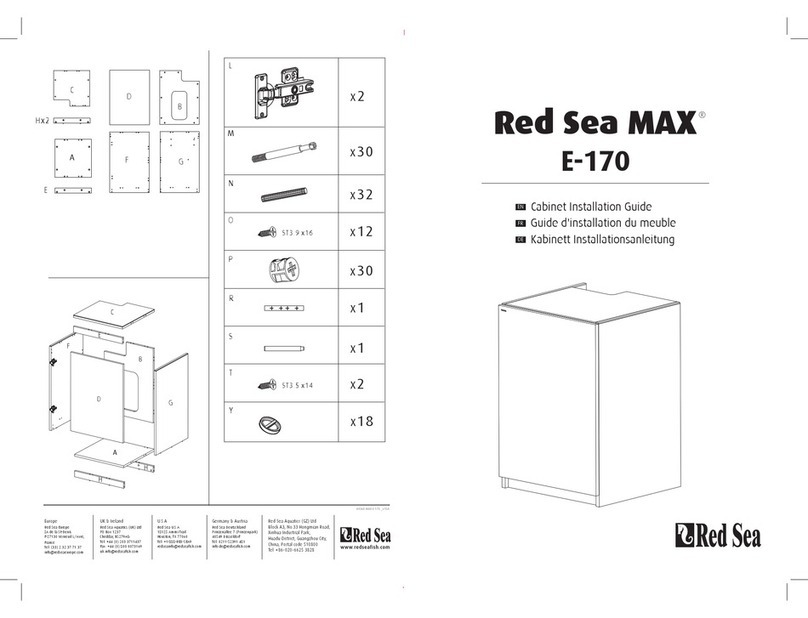
Red Sea
Red Sea Complete Plug & Play MAX E-170 installation guide

Isokern
Isokern FIRE-LITE series owner's manual
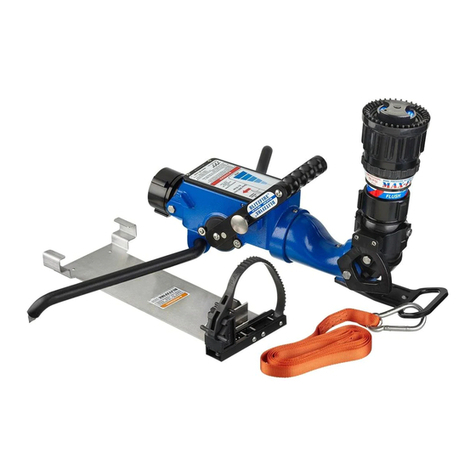
Task Force Tips
Task Force Tips BLITZFIRE Series INSTRUCTIONS FOR SAFE OPERATION AND MAINTENANCE
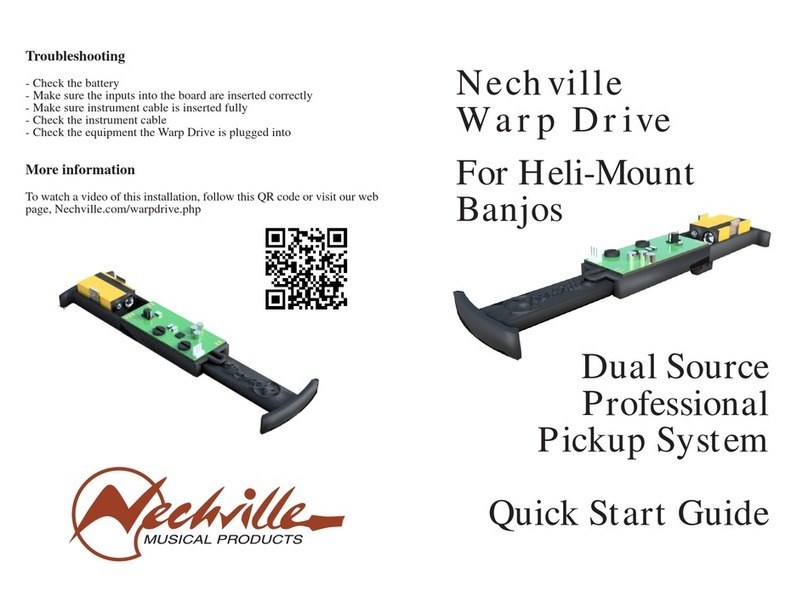
Nechville
Nechville Warp Drive quick start guide
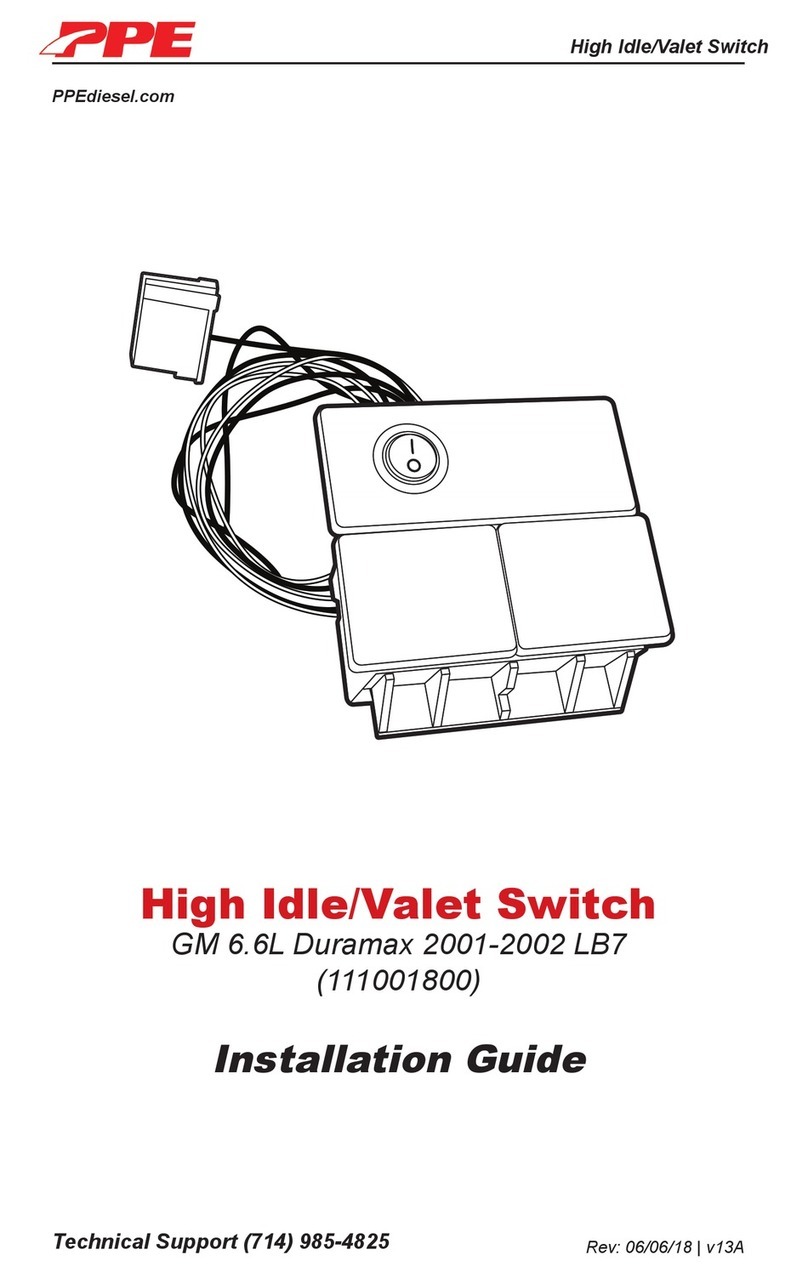
PPE
PPE High Idle/Valet Switch installation guide

